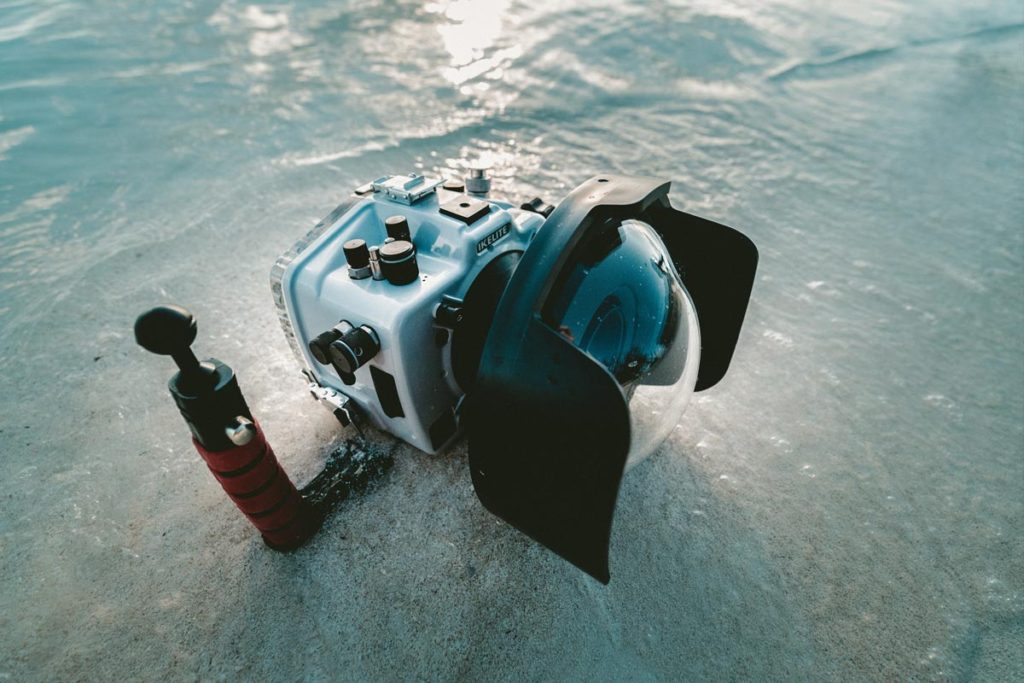Urgh! If only these camera gears could clean themselves! Such utterances are quite common among underwater photographers before and after every photography expedition. Without a doubt, underwater gear maintainance is a part every photographer would love to skip. In fact, if this line of photography wasn’t so intriguing, I bet no one would dare venture in it. But it is what it is. Thorough maintenance has to be done on your camera gear before and after diving lest you fall a victim of the dreaded flooding predicament. Maybe you will be lucky and get off with a warning (foggy screen) instead of flooding. Nonetheless, to keep your gear around for longer and to save time lost going back to the boat to clean your camera, proper maintenance tips are a must. But how do you do this? This is where we come in. sit back, relax and keep reading.
Underwater Gear Maintainance Tip #1
Pay Special Attention To Your O-Rings

Most underwater camera problems stem from poor O-ring maintenance. You ought not only to properly clean your O-rings but also to keep them well lubricated. Using a Q-tip, gently remove the dirt from the surface of your various O-rings. For large rings, you can easily use your hand while being extra careful not to stretch them out.
After proper cleaning, you should proceed with lubrication ensuring you use just a little oil. The lubricant provided in the manufacturers kit usually works just fine.
If for any reasons cleaning your housing is absolutely impossible after your diving expedition, try not to open it to avoid transfer of debris.
Underwater Gear Maintainance Tip #2
Don’t Forget The Lenses

Your lenses will also need some cleaning every now and then. Special care ought to be taken to prevent them from scratching while being cleaned. Start by blowing off the dust or sand, then proceed to remove the remaining with a soft brush. After this, wipe the lens with a lens cloth using cleaning fluid.
To avoid running or scratching your lenses, always use a lens cloth or tissue to wipe it. If anything, avoid changing your lenses in dusty places all together and store them in their lens caps when not in use.
Underwater Gear Maintainance Tip #3
Prevention Is Better Than Cure

Sometimes you can clean and maintain your camera gear but still fall a victim of fogging and scratches due to overlooking a few issues. For one, leaving your gear in the sun before diving is a big no-no. your gear will get all heated up by the sun such that, as soon as you get in the cold water salt crystals will form around your camera’s housing. A common cause of fogging is forgetting to properly wipe the inside of your housing. Sometimes you may have given it a good wipe but still get water droplets forming around the edges. A desiccant can quickly solve this problem by absorbing any excess water in the housing.
Underwater Gear Maintainance Tip #4
Nothing Sucks Like A Scratch On Your Dome Ports

Scratching up the acrylic or glass surface of your ports is easier than you’d expect. It can even happen when you emerge or submerge into the water. To stay safe, you ought to invest in covers for your port. Ensure you cover them before emerging from water especially.
Acrylic ports have the advantage of being able to fix scratches as opposed to glass one which when scratched, cannot be fixed. Using a special kit comprising of several layers of sand paper, you can work on your scratched ports leaving them as good as new.
Underwater Gear Maintainance Tip #5
Avoid Common Flooding Pitfalls

Flooding can be caused by obvious reasons such as diving from a high point to very subtle reasons that need double checking. One of the most common reasons is having debris caught up around the O-rings hence compromising on the ability of the housing to stay water proof.
The O-ring itself might be wrongly placed in its groove leading to poor closure. Salt and sand deposits when not well cleaned can also compromise the O-ring seal making your housing susceptible to flooding.
Finally, always double check the entire housing, before you dive to ensure everything checks out and most importantly, close the latches properly and ensure the synch cord, is well screwed in.
Final advice.
Cleaning and maintaining do not just happen after diving. Even if you have not been using your gear for a while, occasional maintenance is highly advised to keep everything nice and functioning correctly. Also, don’t neglect subtle areas such as the controls and in between parts. Finally, double check everything before diving, it may just save you a ghastly flooding experience.


Comments are closed.